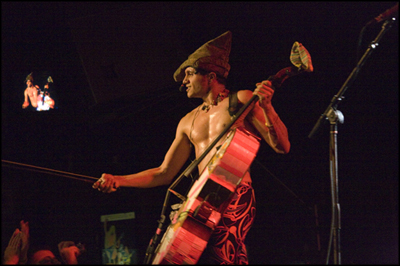
Harry Crosby and unidentified woman, Four Arts Ball, Paris
“Yet it was precisely in his character … to invest all his loyalty and energy in magic: at first the approved magic of established religion; later the witchwork of poetry and sun worship; finally the black mass of violence” -Geoffrey Wolf, Author of Black Sun: The Brief Transit and Violent Eclipse of Harry Crosby
Harry Crosby – self indulgent socialite, tortured poet, wealthy mystic …. a playboy who lived his life with reckless abandon – was a man both adored and reviled. He has been described by some as “a representative figure of the so-called Lost Generation”, the bohemian 1920s.
A godson of J.P. Morgan Jr., Harry was a Harvard graduate and a decorated war veteran, who had left school to become an ambulance driver in France with his upper-crust chums during World War I. He ended up with the Croix de Guerre for valor and, after a few frustrating years back in Boston, fled to Paris for the rest of his short life. Married in 1922 to Mary Phelps Jacob, known as “Caresse”, they lived the “ultimate Bohemian lives as poets, artists, and patrons in Paris in the 1920’s. To every adventure their answer was always ‘yes’.” Harry once sent a telegram from Paris to his father, the quintessential sober, patriarch, which read, “Please sell $10,000 worth in stock. We intend to live a mad and extravagant life.”
While living and writing in Paris Harry Crosby founded The Black Sun Press, one of the “finest small presses of the twentieth century”. In 1924, the Crosbys went public with their first book. The following year, they each published their first collections of verse. Harry commissioned Alastair – a “spectacularly camp” German creator of beautifully decadent and Gothic fantasies – to illustrate his second collection, Red Skeletons. Soon they were issuing works by other writers, including Poe, James, Wilde, Joyce and D. H. Lawrence.

Color plate from Red Skeletons, by artist Alastair
On December 10, 1929, Harry was found in bed with a .25 caliber bullet hole in his right temple next to his mistress, the newly married Josephine Bigelow who had a matching hole in her left temple, in an apparent suicide pact. Harry’s toenails were painted red and strange symbols were tattooed between his shoulder blades and on the soles of his feet. A lover of dark mysteries to the last, he left no suicide note. London’s Daily Mirror speculated on psychological motives, while New York’s Daily News blamed poetry and passion: “Death itself had been the motive, others speculated, just as aspiring poet Harry’s life had been his greatest artwork.”
Coilhouse recently caught up with Erik Rodgers, founder of String and a Can Productions, and director of The Black Sun: The Life and Death of Harry Crosby, who provides his own insight into Harry Crosby’s strange, short life and speaks to what makes the man such a fascinating study.
Coilhouse: How did you come to decide Harry Crosby might make good material for a play – what it was about him or his life that inspired you, or what aspect of him you were hoping to shed more light on? How did you come across him to begin with?
Erik Rodgers: I actually came upon Caresse first, while developing a project on Salvador Dalí. [My business partner] was intrigued by the idea of such an accomplished and independent female from that era, and started researching her life. Of course as soon as she began reading about Caresse, she discovered Harry as well. Their story captured her imagination, and she began relating to me some of the details as she read them. We both felt there was something vital and overlooked in their story, something that had been obscured by all the scandal and negative criticism.









